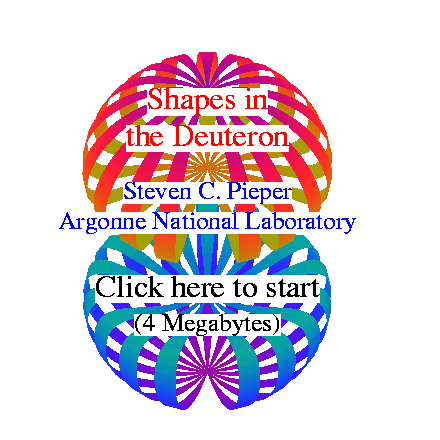
|
Shapes in the Deuteron
The movie shows a deuteron polarized along the vertical axis
Each frame shows the shape of the deuteron at a specific density,
that is the surface that encloses the parts of the deuteron that are
at higher density. If there are two surfaces with one inside the other,
the inner surface shows the
volume excluded by the repulsive core in the NN force.
The densities are shown in each frame in units of nucleons per
cubic femtometer (1 fm = 10-15 meter). The density
in the center of large nuclei (such as lead nuclei) is approximately
0.16 fm-3, however the highest deutron densities are
more than twice this value!
|
